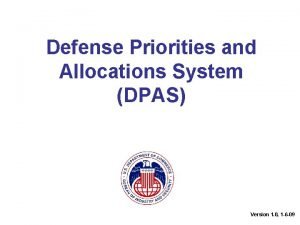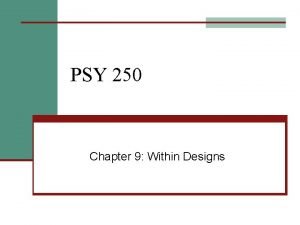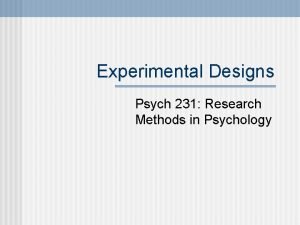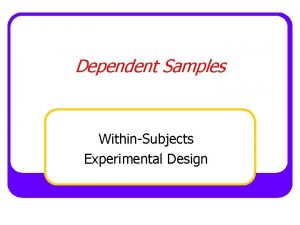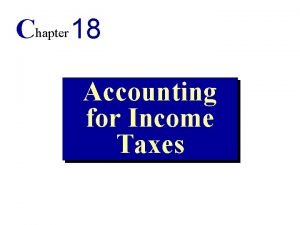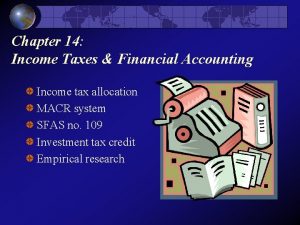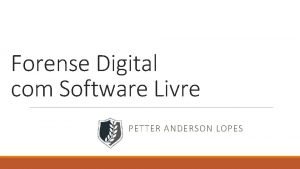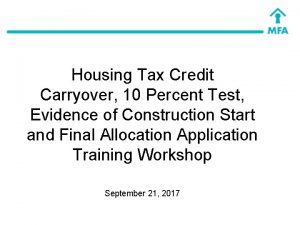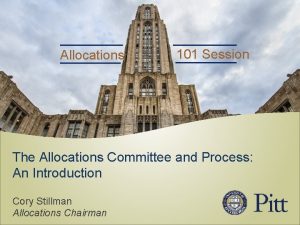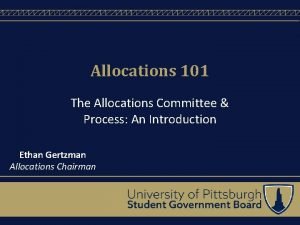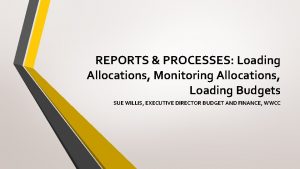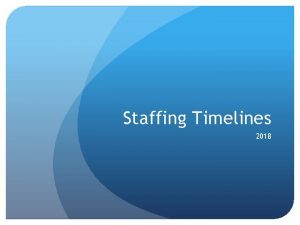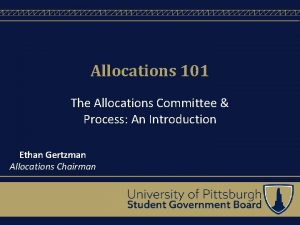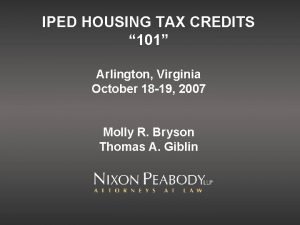Carryover Allocations and the 10 Test IPED Housing













- Slides: 13

Carryover Allocations and the 10% Test IPED Housing Tax Credits “ 101” October 16 -17, 2008 By: Catherine E. Tenney, Esq.

Federal Placement in Service Deadlines • General Rule: A project must generally be placed in service in the year that the low income housing tax credit is allocated by the tax credit agency • Carryover Exception: A project which receives a valid carryover allocation may be placed in service no later than the end of the second calendar year after the year that a carryover allocation is made To obtain such an extension, a project must receive a valid carryover allocation agreement and satisfy the “ 10% test” in a timely manner

Requirements for a Valid Carryover Allocation • • The address of the building (or if none exists, a specific description of its location) The name, address and taxpayer identification number of the building owner • The name and address of the state tax credit agency • The taxpayer identification number of the state tax credit agency • The date of the allocation • The credit dollar amount allocated to the building • The taxpayer’s total reasonably expected basis in the project as of the close of the second calendar year after the allocation year • The taxpayer’s basis in the project at the close of the calendar year in which the allocation is made and the percentage that this amount bears to the total reasonably expected basis • The date the building is expected to be placed in service • The building identification number assigned to the building

Satisfying the 10% Test • Federal Rule: 10% of the reasonably expected basis in the project (as of the close of the second calendar year) must be paid or incurred within one year of the date of the carryover • States may impose stricter standards as long as the terms do not violate the Federal credit rules • 10% test is a “cliff” test

Defining “Reasonably Expected Basis” For 10% Test Purposes • Reasonably expected basis means the adjusted basis of land depreciable property (whether or not it is included in eligible basis) • Basis attributable to non-residential rental property (i. e. , commercial property/site improvements) may be includable in carryover allocation basis even though such property is not included in eligible basis • Eligible costs include building/construction costs, related personal property and land costs • Ineligible costs include permanent loan fees, reserves, syndication fees, partnership organizational costs and tax credit fees • Costs may be incurred by taxpayer prior to the calendar year of the allocation • QCT/DDA increases not included in 10% test calculations

Common 10% Test Expenditures • • Acquisition costs for land buildings Construction costs (e. g. , materials, permits, etc. ) Development fee Fees for services (e. g. , architect, contractor and engineer) • Construction financing fees/construction period interest

Examples of Supporting Documentation and Tax Considerations

Acquisition of Land/Buildings • • • Documentation Recorded deed to entity receiving carryover allocation Title insurance policy Settlement statement Purchase money note/mortgage Other financing documents (including evidence of at least 10% cash down payment) Appraisal

Construction Costs Documentation • Construction contract • Invoices/draw requests for all costs • Lumber and materials: need to review storage contracts, evidence of insurance, down payment and promissory note for any unpaid balance

Developer Fees Documentation • Development agreement – Need to review the written development agreement in place on 10% test deadline date – Scope of work limited to eligible services – Agreement must include benchmarks for earning fee – Confirm that benchmarks are satisfied to properly include development fee in 10% test calculation

Fees for Services Documentation • Written agreements (such as architect/engineering contracts) describing services • Invoices and work product for services rendered (such as environmental reports and market studies) • Statements of legal/accounting costs must be related to the actual acquisition/construction of the project (not for syndication, partnership formation or permanent loans)

Construction Financing Fees and Construction Period Interest Documentation • Evidence of obligation to pay, such as loan agreement or promissory note and interest statements

